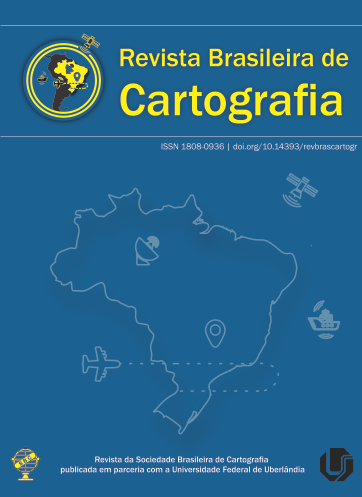Manufacturing Parameters for Tactile Map Symbols
Main Article Content
Abstract
Regarding spatial accessibility, the understanding of the environment and of the paths to be traveled by visually impaired people, tactile maps are an important tool in order to help to the prior planning of the route to be performed by its users. According to the Brazilian Regulatory Standard, NBR 9050: 2015 which deals with accessibility to buildings, furniture, spaces and urban equipment, the installation of tactile maps is a requirement to be met in public access buildings, however, there are few guidelines regarding to its manufacture, and to the characterization of tactile reliefs. In addition to this, there are divergences on the specifications of the elements among researchers in the area. This paper contributes to social inclusion with as to the teaching of geography, cartographic language and spatial orientation, as it puts together parameters adopted nowadays in Brazil, within the scope of tactile cartography. Moreover, it brings a synthesis of the elements in use in Brazil and abroad related both to cartography and the manufacture of maps for buildings. Besides, it also develops, evaluates and validates, through testing with professional braille proofreaders, new parameters to be shared by tactile map developers. The parameters presented include symbols, letters, lines, textures and braille, characterizing them in terms of thickness, shape, surface elevation and representation patterns, resulting in a pattern of representation and manufacture of symbols for tactile maps.
Downloads
Metrics
Article Details
Authors who publish in this journal agree to the following terms:
- Authors retain copyright and grant the journal right of first publication with the work simultaneously licensed under a Creative Commons Attribution License that allows others to share the work with an acknowledgment of the work's authorship and initial publication in this journal.
- Authors can enter into separate, additional contractual arrangements for the non-exclusive distribution of the journal's published version of the work (e.g., post it to an institutional repository or publish it in a book), with an acknowledgment of its initial publication in this journal.
- Authors are permitted and encouraged to post their work online (e.g., in institutional repositories or on their website) before and during the submission process, as it can lead to productive exchanges, as well as earlier and greater citation of published work (see "The Effect of Open Access").





